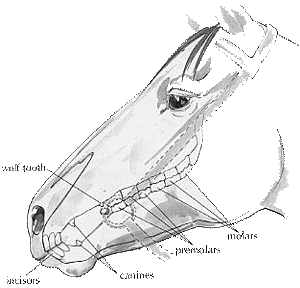
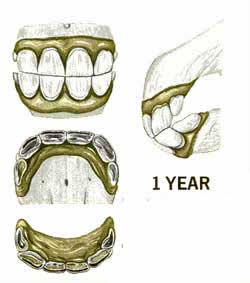
By one year old, a foal should have a mouth full of 24 deciduous baby teeth and 2 wolf teeth
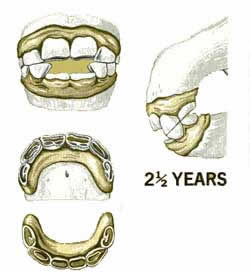
The first permanent incisors will come in at 2 ½ years as will the second premolars.
Permanent central incisors have erupted baut are not in contact. Lowers are not yet free of the gum over much of their surface.
The chewing surface of the intermediates is worn to smooth.
Corners show definite wear.
The teeth then alternate their arrival with the 3rd premolars at 3 years, second incisors at 3 ½ years, 4th premolars at 4 years, and third incisors at 4 ½ years.
The third molars also come between 3 ½ - 4 years.
The five years old horse
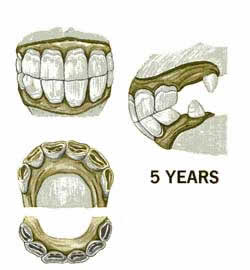
In male horses, the canines will appear in the bars of their mouth at 4 to 5 years of age.
The canine teeth have erupted fully.Some mares may develop rudimentary canines depending on the presence of canines and wolf teeth.
The centrals and intermediates show wear on the chewing surfaces, but cups are still visible and are completely encirecled by enamel.
Corners are beginning to wear.
By the time horse is five years old, all the permanent teeth should be through and the gums should be a healthy pink colour with no bruising.
Permanent dentition is complete. All teeth are in wear
The ten years old horse
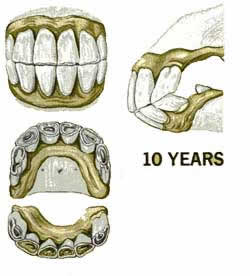
The angle of the horses jaw and teeth is increasingly oblique.
The chewing surfaces of the lower centrals and intermediates are rounded.
The dental star is more distinct and near the centre of the teeth.
Upper intermediates are nearly smooth with cups disappearing.
Galvaynes groove appears on the upper corner incisor.
Adult horse will have 36 to 42 permanent teeth.
The fifteen years old horse
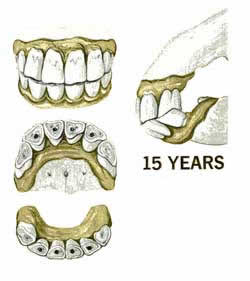
The lower incisors may appear shorter than the uppers when viewed from the front.
Galvaynes groove extends halfway down the outer (lip) side of the upper corner incisor.
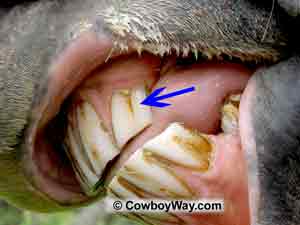
Galvaynes groove
A Galvayne's groove is a dark or brownish groove in the upper corner incisor teeth of horses. It is only visible in horses of a certain age, and depending on whether or not it can be seen, how long it is, and where it is (at the top of the tooth or at the bottom) it may be helpful in determining a horses' age.The lower centrals and intermediates appear triangular on the chewing surface.
All incisors show a distinct dark round dental star in their centres.
The twenty years old horse
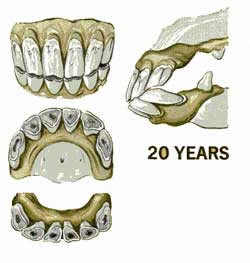
Angulation of the jaw is distinctly oblique.
Galvaynes groove extends the entire length of the upper corner incisor.
All incisors are triangular.
Each dental star is round near the centre.
There is considerable spacing between the teeth.
The lowers may be worn almost to the gum.
Sources: Horses ages www.localriding.com,Galvaynes groove www.cowboyway.com




















0 comments:
Post a Comment